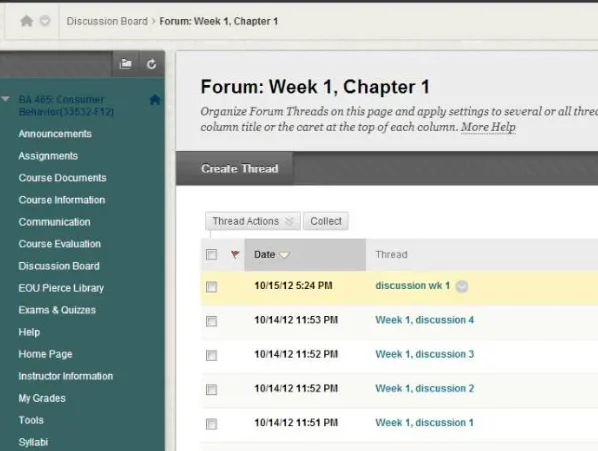Today, most educational institutions require students to submit their academic essays or papers through plagiarism-checking tools. Though there are plagiarism-detection tools, some of them are incapable of detecting AI-generated content.
Submitting essays or papers that ChatGPT has generated is considered plagiarism, and this article will focus on whether Blackboard can detect AI plagiarism and if SafeAssign can flag ChatGPT.
Does Blackboard have AI Detection?

Currently, Blackboard does not have AI detection because it relies on the SafeAssign tool to check for all forms of plagiarism.
As we shall discuss later in this article, SafeAssign cannot detect any AI-generated content from GPT models such as ChatGPT.
Students are quickly adopting to generating their academic papers and essays through ChatGPT, and they easily get away with it if the plagiarism-checking tools that are used to submit their work are incapable of detecting AI plagiarism.
AI plagiarism is still academic plagiarism because students are not submitting papers they have written from scratch.
Therefore, since Blackboard does not detect AI-generated content because it uses SafeAssign, which has not been updated to flag AI content, students can submit AI content without being flagged.
Can SafeAssign Detect AI-Generated Content?
As indicated above, SafeAssign is currently incapable of detecting AI-generated content. SafeAssign is a tool used for plagiarism detection that helps educators and institutions identify the possibility of plagiarized content within the essays and papers that have been submitted through it.
Below, we will explore in detail the limitations of SafeAssign in detecting AI-generating content, the challenges in detecting AI-generated content, and examples of how plagiarism-detecting tools can detect AI content.
Limitations of SafeAssign in Detecting AI-Generated Content
The first limitation of SafeAssign is based on how it works. The plagiarism-detecting tool compares the content of papers and essays submitted by a student to a database containing existing sources, including internet sources, student submissions, and journals.
When SafeAssign determines that there is a significant match between sources in the database and the student’s submission, the paper will be flagged as potentially plagiarized. Safeassign works through textual comparison.
However, AI-writing models such as ChatGPT generate completely new and original content that has never been previously submitted or published. AI’s algorithms are so good at writing that their style can hardly be distinguished from human-generated content.
Therefore, since AI produces original content, SafeAssign cannot detect plagiarism from AI-generated content.
The second limitation of SafeAssign in detecting AI-generated content is the fact that it was created to flag verbatim plagiarism or content that has been copy-pasted word-for-word from another source. AI-generated content is new and unique, in addition to AI writing models being capable of paraphrasing content.
This makes it very difficult for SafeAssign to detect AI-generated content.
Challenges in Detecting AI-Generated Content

One of the major challenges in detecting AI-generated content is that it is original. AI writing models such as ChatGPT produce new and unique content that has never been published or submitted before.
This means that plagiarism-checking tools that rely on comparing the submitted papers with existing sources from databases cannot detect that the content has been generated by AI and therefore plagiarized.
The second reason is that plagiarism-checking tools look for text that has been copied word-for-word, in most cases three words consecutively.
Content generated through AI writing models does not share any similarity with existing sources because it can either rewrite the content, explain the content differently but bring out the same argument, or paraphrase the source.
Examples of how AI-Generated Content Can be Detected
1. Writing Style and Language
Content that AI has generated lacks variability and nuances that are present in content that a human has written. There may be repetition in phrases, keywords, or sentences.
2. Inconsistencies
Content that AI has generated may contain some contradictions, inconsistencies, or factual errors because it is often incapable of determining the context.
3. Source Code and Metadata
Though this method requires technical know-how, AI-generated content can be flagged by examining the source code or metadata of the content. This will determine whether AI or a human has generated it.
Why Blackboard’s SafeAssign Cannot Detect AI Content
The first reason Blackboard’s SafeAssign cannot detect AI content is that it compares the content of papers and essays submitted by a student to a database containing existing sources, including internet sources, student submissions, and journals. AI content is unique and new; hence it cannot be detected.

The second reason is that it was created to flag verbatim plagiarism or content copied word-for-word from other sources.
AI-generated content is new and unique, in addition to AI writing models being capable of paraphrasing content. This makes it very difficult for SafeAssign to detect AI-generated content.
Finally, SafeAssign’s algorithms have not been so far updated to include features that can flag AI content based on language and writing style, inconsistencies, and, finally, source code and metadata.
How to Prevent Students from Using AI Content
Punishing them
If students know that they will face academic consequences when they have been caught using AI, they will avoid it.
Using AI plagiarism Detectors
Instructors and educational institutions can use updated plagiarism-detection tools such as Turnitin and Canvas that have incorporated AI plagiarism detectors.
Teaching on importance of integrity
Integrity is key in academics, and educators should always make their students aware of its importance. The use of artificial intelligence is threatening this integrity. Students should learn to take pride in the work that they have done by themselves.
Setting Practical Tests
Practical tests are difficult to cheat because students may be working in groups under the supervision of an instructor. As such, there will be limited or no opportunity to cheat.
Asking Application Questions Instead of Theory
Application questions test the technical know-how of a student. AI often finds it difficult to respond to such questions because such an application requires a human’s touch and skills.
